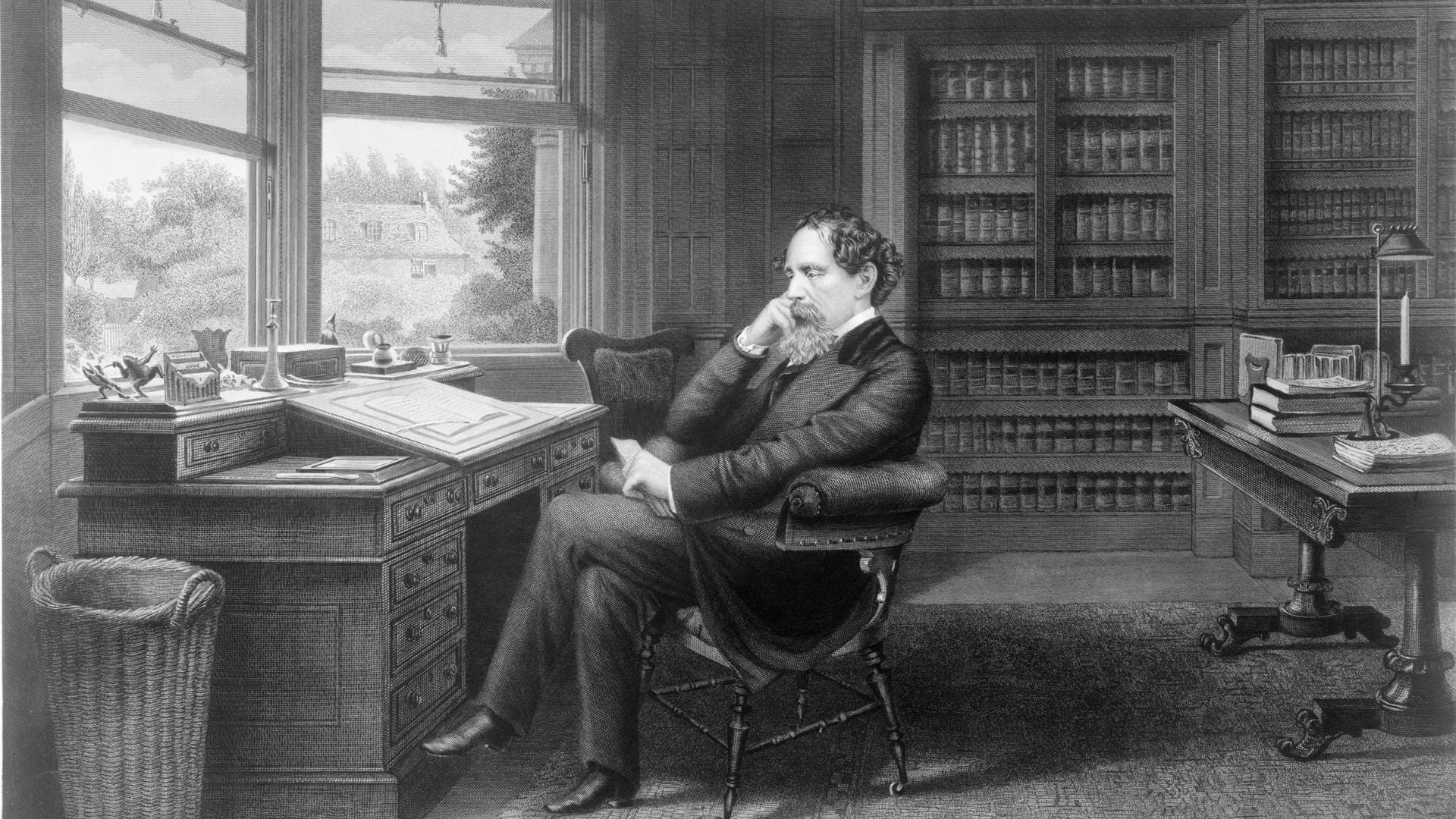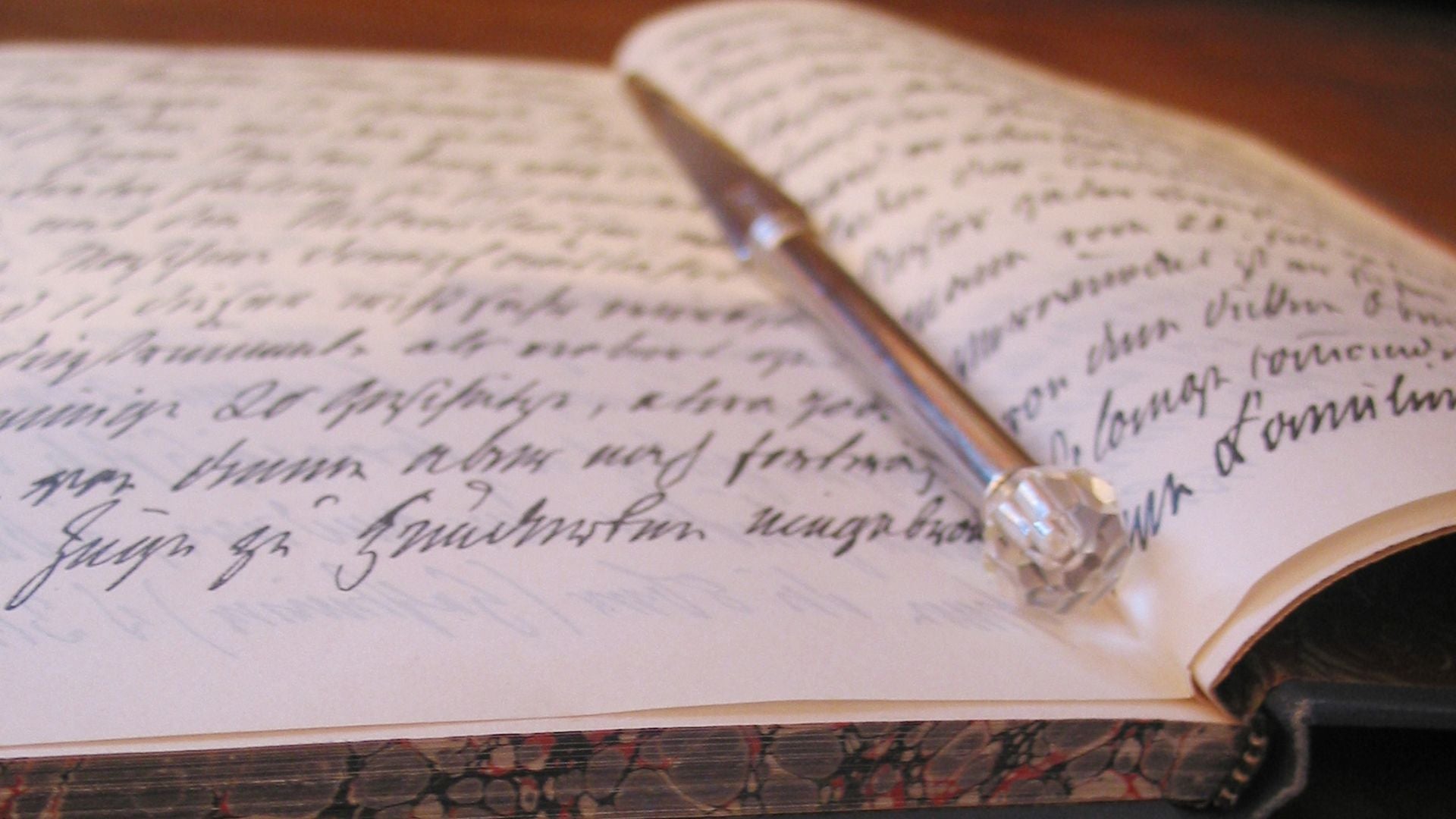The holiday season is a time of wonder, warmth, and reflection. It is a moment to embrace the timeless magic of stories that have shaped our understanding of love, kindness, and the human spirit. Among these Christmas tales, few resonate as deeply as A Christmas Carol by Charles Dickens. This enduring classic originally created during the Victorian Era, not only exemplifies the power of storytelling but also offers a profound reminder of how imagination and creativity, born through the act of writing, can transcend time.
The Timeless Art of Storytelling
Imagine stepping aboard a time machine and traveling back to the Victorian era—a time when storytelling was revered as an art, and handwriting served as its most intimate medium. Picture Charles Dickens at his desk, quill in hand, weaving narratives that illuminated the human spirit—its frailties, aspirations, and boundless potential for change. Through his words, Ebenezer Scrooge's transformation from a cold-hearted miser to a generous benefactor comes alive, reminding us of storytelling’s profound power. These tales were not merely reflections of the society they portrayed but became catalysts for empathy, growth, and the possibility of redemption.
Building on this rich tradition of storytelling, Dickens’ work transcended mere entertainment to serve as a mirror of societal truths and an invitation to envision a better world. Every word he carefully penned carried the weight of his ideals, bridging the tangible realities of his era with the boundless possibilities of change and progress. His vividly crafted characters became more than fictional figures; they embodied universal struggles, hopes, and triumphs, making them timeless symbols of the human condition. And that is what it is; in Dickens’ time, writing was far from a routine task—it was a deeply personal act of creativity and intent, a medium through which the individual connected with the collective.
This deliberate intertwining of the personal and the universal gave his work a resonance that continues to inspire and affirm the transformative power of the written word.
Handwriting: The Bridge Between Imagination and Reality
If you think this noble activity requires us all to be pro writers, think again! Just as Dickens’ stories bridged the gap between societal realities and transformative ideals, the simple act of handwriting serves as a bridge for everyone—connecting imagination to reality. In a world increasingly dominated by digital convenience, the tactile nature of handwriting offers something uniquely profound: a deeply personal connection to our thoughts and creativity—pure, simple, and beautiful. When Dickens wrote, each stroke of his pen was far more than a mechanical act; it was an intimate expression of his vivid imagination, transforming ideas into words that brought characters and stories to life—stories that continue to inspire us to this day.
Handwriting, as an art form, allowed Dickens to immerse himself in the heart of his creative process, making each word a manifestation of his vision, struggles, and ideals. It wasn’t merely about producing stories but about channeling emotions and dreams into tangible form. The deliberate act of putting pen to paper allowed his imagination to flourish, creating narratives that have stood the test of time.
Even today, the essence of this practice continues to resonate. Handwriting is more than a method of recording ideas; it is an invitation to pause, reflect, and connect more deeply with our thoughts. Research highlights how handwriting engages the brain in unique ways, fostering a richer interplay between ideas and their expression. The rhythm of ink flowing onto paper mirrors the ebb and flow of creativity, turning each stroke into an act of timeless expression.
As we reflect on Dickens’ enduring influence, we are reminded that handwriting is not just a tool of the past but a celebration of imagination’s ability to transform fleeting thoughts into enduring stories. In embracing this practice, we connect not only with our ideas but also with the timeless endeavor of storytelling—a tradition as relevant today as it was in Dickens’ time.

Inspiration for Modern Storytellers
Inspired by the enduring legacy of Dickens’ handwritten works, his ability to capture the magic of Christmas lies not only in the words he chose but in his dedication to the art of storytelling. His timeless tales remind us of the beauty and purpose of handwriting—not just as a creative outlet but as a meditative practice that fosters connection and introspection. Each word he penned was an invitation to slow down and fully immerse himself in the worlds he created, an approach that modern storytellers can adopt to unlock their creativity.
Whether you’re jotting down thoughts in a journal, drafting a heartfelt letter, or sketching the framework of a story, the act of writing by hand offers a rare chance to connect deeply with your ideas. Unlike the hurried pace of digital tools, handwriting encourages reflection, refinement, and a personal engagement with your creativity. It invites you to pause, breathe, and allow your imagination to flow freely onto the page, transforming fleeting ideas into tangible expressions of thought.
Writing Your Own Christmas Magic
As the holiday season unfolds, take a moment to reflect on the stories that have shaped your life. Perhaps this reflection will inspire you to craft a Christmas tale of your own—one that captures the warmth, wonder, and cherished memories of this special time. Whether it’s a heartfelt recollection of treasured moments or a whimsical journey into the magical, your words hold the power to create a timeless gift—something to revisit, share, and celebrate.
Writing is more than a mere act; it’s a tradition that bridges generations, a way to connect with your innermost thoughts and the people you hold dear. This is where Epica belongs. We believe in the enduring magic of putting pen to paper, a practice that transforms fleeting thoughts into something meaningful and lasting. Our finely handcrafted journals are not just tools; they are companions—designed to honor the art of writing while sparking your imagination. This Christmas, let your words flow freely across our pages, weaving stories filled with the same wonder and spirit Dickens brought to life in his timeless works.
With each stroke of your pen, you become part of a legacy—joining the storytellers who have celebrated the human spirit through the power of words. Writing allows you to blend imagination and reality, crafting a narrative uniquely your own.
A Legacy of Creativity
Charles Dickens’ A Christmas Carol reminds us that writing is far more than a way to communicate—it is a celebration of the human spirit, a vessel for imagination, and a spark for change. His timeless words inspire us to see the magic in storytelling, while his legacy reminds us of the enduring power of stories to connect hearts and transcend generations. As you pick up your pen this holiday season, let his work embolden you to craft your own tale, one that carries forward the wonder and warmth of Christmas and New Year's festive vibes.
This holiday, let your journal become a gateway to your imagination—a place where thoughts turn into stories and dreams take shape on the page. Each word you write carries the spirit of this special season, reminding us of the beauty in reflection and the joy of creating something meaningful. As Dickens wrote, “It is a fair, even-handed, noble adjustment of things, that while there is infection in disease and sorrow, there is nothing in the world so irresistibly contagious as laughter and good humor.”.







